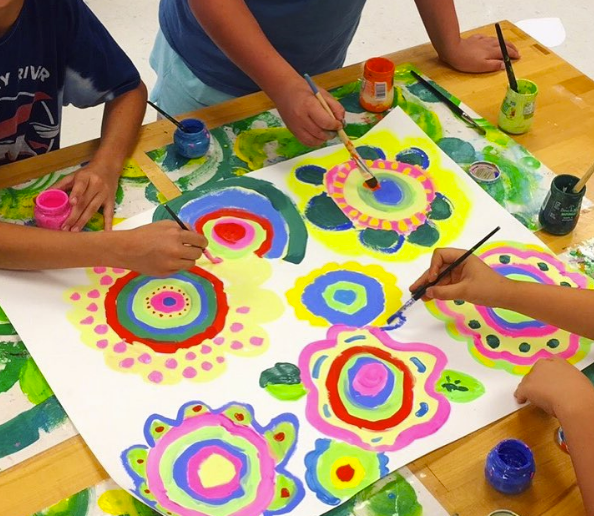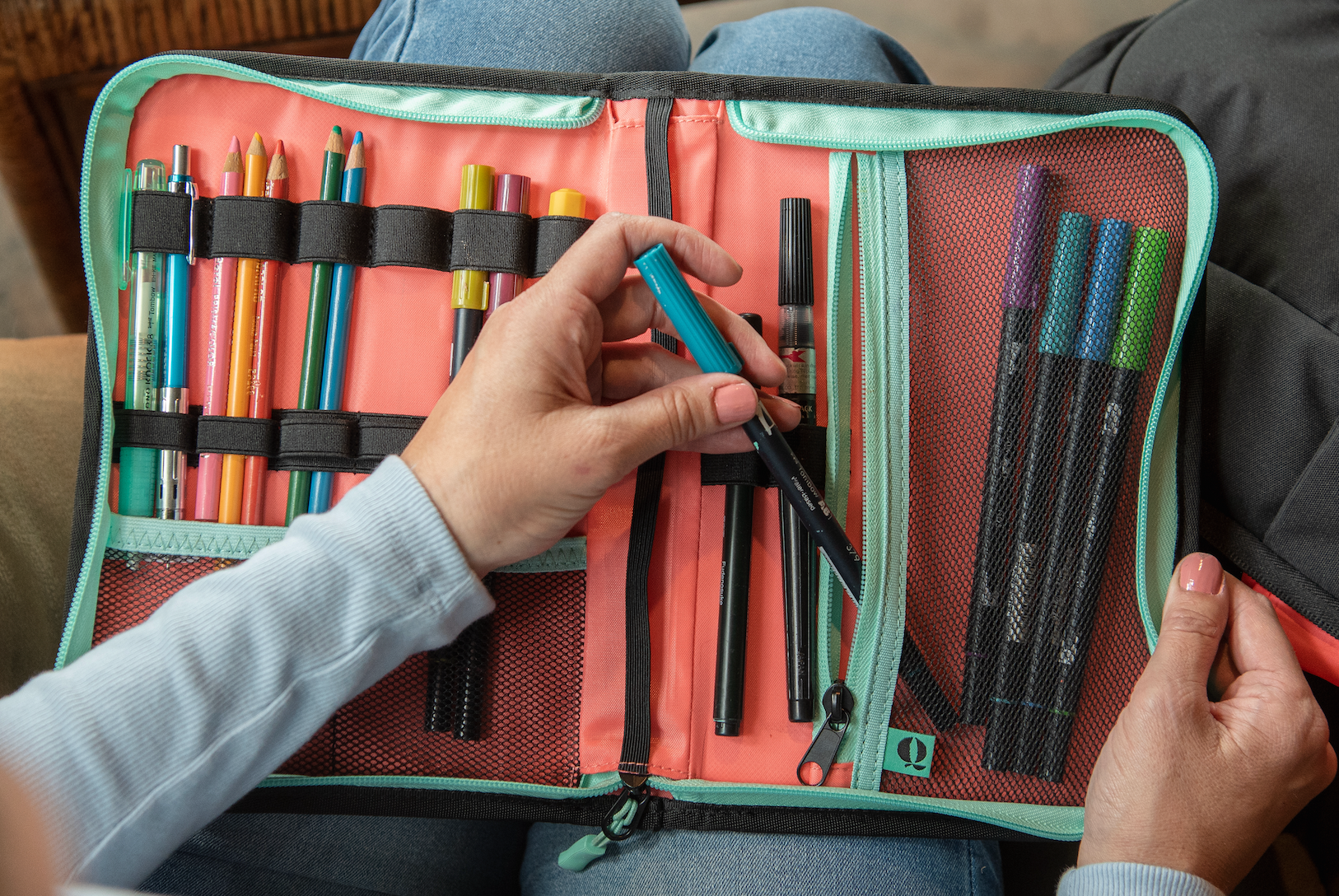OOF. Did anyone else cringe when they said this blog title and think, "yep, this is me" Don't worry, you are NOT alone in these struggles!

As someone who spent over 15 years in the art room, I have done a lot of reflecting on things I wish I knew in my early years as a teacher. One of the big ones is how to handle the many requests that seemingly come with the title of being an art teacher, and how to *respectfully* say no to the requests that are not aligned with your own needs or time. As a recovering people pleaser, this is something I have often struggled with, especially in my professional life. It's even harder when you are new to the profession or new to a building. You want to make a good impression, but also don't want to lie to rug down over yourself and create resentment. I GET IT.
I will never forget the time during my first year teaching I was asked to make a banner of our mascot for the hallway (totally fine, I was happy to). But then the requests slowly started to morph into "Oh, would you mind making ____ for my classroom?" "Would you be able to make this ______ for my church?" "Is it possible for you to make ______ for my daughter's birthday party?" AHHHHH! Enough! What's the saying? No good deed goes unpunished? Yeah, that was how I started to feel in a very short amount of time, which led to resentment and burnout.
Thankfully, when I changed schools, I was more strategic in how I handled these types of requests that would inevitably come in my new building and managed to find a much better balance in what I would say yes to, and what I learned to respectfully say no to.
While being helpful and a team player is important, it’s equally crucial that as art teachers, we learn to set boundaries to protect our time and energy. Here are some respectful ways to help you say no to miscellaneous requests in schools.

1. Acknowledge the Request
Begin by acknowledging the request. This shows that you respect the person asking and that you’ve considered their needs.
**Example:** "I appreciate you thinking of me for this project."
2. Be Honest and Direct
Provide a clear and honest reason for your refusal. People are more understanding when they know the reasons behind your decision.
**Example:** "I’m currently in the middle of a clay unit which requires more preparation and clean-up than usual, so unfortunately, I just don’t have the capacity to take this on right now."
3. Offer Alternatives

Suggesting alternatives can help ease the refusal. It shows that you are willing to help in a different capacity or direct them to someone who can.
**Example:** "While I can’t help with this right now, have you ever tried to use a projector to help you draw large-scale? It's a game changer, and I would be happy to show you how to do it!"
4. Set Clear Boundaries
Establishing boundaries early on can prevent future misunderstandings. Be clear about what you can and cannot do. Here is one of the boundaries I created for myself early on:
**Example:** "I am happy to help with decorations that will benefit the school and student body as a whole, but unfortunately, due to lack of time, I am unable to take individual requests for projects."
5. Lead with Empathy
Expressing empathy can soften the refusal and show that you understand the importance of the request.
**Example:** "I'm sorry, I wish I could help with this task, but unfortunately, my schedule is completely full."
6. Provide a Timeframe
If you’re unable to help now but might be available later, provide a timeframe for when you might be able to help.
**Example:** "I can’t help this month due to preparation for the art show, but I might have some time next month after things die down."
7. Get your Students Involved!

Honestly, if you receive a request that you genuinely would like to help with but are strapped on having the time, integrate the project into your classroom and get your students engaged to help! "Many hands make light work" is not joke and most of the time the task will take 1/4 of the time to make when you enlist in the help of your students.
8. Practice Saying No 🙃
Oooof this is me giving advice but also knowing this is the one I struggle with the most. But with anything, the more you practice, the easier it gets
**Example:** "I’ve overextended myself a bit and realized I need to focus more on my primary responsibilities as an art teacher, so I’ve decided to limit extra commitment for the time being.

Now, I do just want to circle back to something that I briefly touched on in the intro—that being helpful and a team player IS important. So please don't misinterpret this blog as "ALWAYS SAY NO TO EVERY AND ALL EXTRA REQUESTS" because that is definitely not my teaching philosophy. I do believe in my core that art teachers have the magical ability to add beauty and joy throughout a school, and I also believe collaboration is an important part of the job and what is best for kids. So while it is important to protect your peace and set boundaries as to not get taken advantage of, creating art for things outside of your classroom is important and helps advocate for your program and makes your school feel warm and wonderful to all who enter. Just make sure that you say yes to the things you can actually fit into your schedule that align with your teaching philosophy. For example: one of the boundaries I have set in my career is that I will happily help make a display if it will benefit the student body/ school as a whole. So that means banners for PBIS, scenery/ props for school performances, etc. What I will not do, is individual requests from staff for a personal project or a project that will only service a small number of kids. I hope that make sense?
Saying no is one of the hardest parts of the job of an art teacher if you ask me, but thankfully after many years of saying yes to all the things and burning myself out, I have finally learned that setting clear expectations from day one is your best bet. Help out when you can, but don't make it the most important part of your job. After all, your contracted job is create high quality art education to your amazing students! You've got this!







1 comment
This post offers great reminders as another school year begins for how to manage the seemingly never ending extras as a “recovering people pleaser.” Boy, do I feel that! I appreciate the perspective of managing additional requests by considering if they benefit the whole school community as opposed to a person or small group. Thank you for this!!!